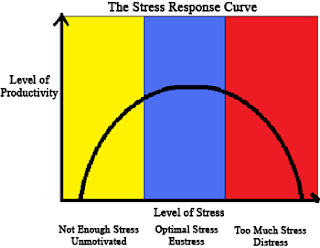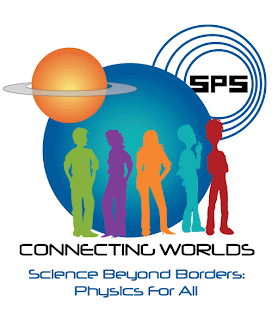Reginald L. Goodwin's Posts (3124)
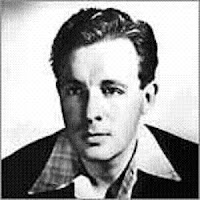 |
| "On June 6, 2012, Ray Bradbury, the Universe's writer, was called back to his galaxy." - Orange County Screenwriters Association |
JUNE 6, 2012
Ray Bradbury, recipient of the 2000 National Book Foundation Medal for Distinguished Contribution to American Letters, the 2004 National Medal of Arts, and the 2007 Pulitzer Prize Special Citation, died on June 5, 2012, at the age of 91 after a long illness. He lived in Los Angeles.
In a career spanning more than seventy years, Ray Bradbury has inspired generations of readers to dream, think, and create. A prolific author of hundreds of short stories and close to fifty books, as well as numerous poems, essays, operas, plays, teleplays, and screenplays, Bradbury was one of the most celebrated writers of our time. His groundbreaking works include Fahrenheit 451, The Martian Chronicles, The Illustrated Man, Dandelion Wine, and Something Wicked This Way Comes. He wrote the screen play for John Huston's classic film adaptation of Moby Dick, and was nominated for an Academy Award. He adapted sixty-five of his stories for television's The Ray Bradbury Theater, and won an Emmy for his teleplay of The Halloween Tree. In 2005, Bradbury published a book of essays titled Bradbury Speaks, in which he wrote: In my later years I have looked in the mirror each day and found a happy person staring back. Occasionally I wonder why I can be so happy. The answer is that every day of my life I've worked only for myself and for the joy that comes from writing and creating. The image in my mirror is not optimistic, but the result of optimal behavior.
He is survived by his four daughters, Susan Nixon, Ramona Ostergren, Bettina Karapetian, and Alexandra Bradbury, and eight grandchildren. His wife, Marguerite, predeceased him in 2003, after fifty-seven years of marriage.
Throughout his life, Bradbury liked to recount the story of meeting a carnival magician, Mr. Electrico, in 1932. At the end of his performance Electrico reached out to the twelve-year-old Bradbury, touched the boy with his sword, and commanded, Live forever! Bradbury later said, I decided that was the greatest idea I had ever heard. I started writing every day. I never stopped.
Web site: RayBradbury.com
CNN: Sci-fi legend Ray Bradbury dies
NASA: Transit of Venus
It's title is above the graph; I pull it from the web site for Antioch University - New England's Psychology Department, ironically an apropos source: "Stressors We Experience in Graduate School."
We use humor to get through the experience of being humans at any cultural/socioeconomic level. I can easily imagine this rainbow graph with it's parabolic arc from Dilbert or PhD Comics. We tend to tolerate the red; rarely celebrating or appreciating the blue (optimal).
I don't mean to be a "downer" (Debbie or otherwise), and still think that pursuit of science in the sake of understanding the world around us and how it actually works is still a viable ambition. An understanding of science informs our thinking and decision processes governing the larger world around us. How/What we understand affects us - positively or negatively - in the societal long run.
Our hierarchical society dictates however, that only a few persons will make it to the apogee of the "Eye of Horus" (ref: dollar bill).
When confronted with data, I prefer to examine it, mull it over then plot strategies for how I will address its impact in my own life. I'd suggest for all that read the following to do the same:
For most graduate students in physics, a research focused career ranks more attractive than teaching, government work, or science outreach and writing. Most PhD physicists, however, will never attain a tenure-track position at a university. Upon entering graduate school, many students realize that the odds are against them, but they push forward regardless.
Students may not realize how their career perceptions will evolve throughout graduate school, however. A study published earlier this month has revealed that research careers become less attractive to graduate students as they progress through school.
Physics Buzz: Graduate School Burnout Quantified
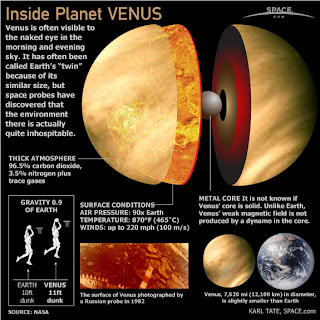 |
| Spacedotcom |
The 2004 and 2012 transits form a contemporary pair separated by 8 years. More than a century will elapse before the next pair of transits in 2117 and 2125. During the 6,000-year period from 2000 BC to AD 4000, a total of 81 transits of Venus occur. A catalog of these events containing additional details is available online at: eclipse.gsfc.nasa.gov/transit/catalog/VenusCatalog.html
Additional information on transits of both Mercury and Venus can be found at: eclipse.gsfc.nasa.gov/transit/transit.html
NASA Eclipse Site: 2012 Transit of Venus
 |
| Technorati - Education in Rural India |
This is an open letter I penned that's gotten quite a few hits on my Scribd.com account. It apparently struck a nerve.
It is an admitted rant, and a "Perchance to Dream" (quite off the Shakespearean original meaning), yet I'd rather dream and vent my frustrations at the inane "solutions" our leaders forward than to comply with muted silence, or impotent apathy.
It is also sad commentary that the complexity of speech by lawmakers has markedly declined over time, paralleling our collective preening for the clever soundbite suitable for cable television and You Tube; limiting thought process and debate to the infamous 140 characters...
...and, preening peacocks seldom come to consensus.
"Education is a basic necessity. It prepares, widens and allows exposure to the entire world through the mind. A sound education implies better quality of thought, which results in superlative quality of life."
Read more: link here, and below photo above. Similar sentiments expressed in this article (a very interesting cartoon that for a brief time, I lived).
| Dilbertdotcom |
The problem is that most of the popular physics that the public enjoys constitutes perhaps 10% of the research that physicists worldwide are engaged in. Again, count the number of physics books in your local bookstore, and you will notice that about 90% of them cover quantum mechanics, cosmology, particle physics and "theories of everything". You would be hard-pressed to find volumes on condensed matter physics, biophysics, the physics of "soft" matter like liquids and non-linear dynamics. And yes, these are bonafide fields of physics that have engaged physics's best minds for decades and which are as exciting as any other field of science. Yet if you ask physics-friendly laymen what cutting-edge physics is about, the answers will typically span the Big Bang, Higgs boson, black holes, dark matter, string theory and even time-travel. There will be scant mention if any of say spectroscopy, optics, polymers, magnetic resonance, lasers or even superconductivity.
Tweedle Dum: If you think we're waxworks, you ought to pay, you know.
Tweedle Dee: Contrariwise, if you think we're alive you ought to speak to us.
Tweedle Dum, Tweedle Dee:That's logic.
The Curious Wavefunction: Physics's PR Problem
 |
| Chemistrylanddotcom |
Single photons are a key ingredient in quantum information systems, but producing them on demand is difficult.
This is a very short article on using the Rydberg excitation state. From the Wiki world:
A quantum computer is a device for computation that makes direct use of quantum mechanical phenomena, such as superposition and entanglement, to perform operations on data. Quantum computers are different from digital computers based on transistors. Whereas digital computers require data to be encoded into binary digits (bits), quantum computation utilizes quantum properties to represent data and perform operations on these data.
Eventually, we'll hit the limit we can print physically, Moore's Law or More Than Moore. After such a milestone/limit, carbon nanotubes will march us towards the technological singularity, an idea that apparently had its Genesis in the 19th century. I wryly compare this to Prometheus ("Forethought").
Physics Today: A Rydberg-atom photon source
See my previous post from last year. Apparently, they've decided on two locations for the Square Kilometer Array:
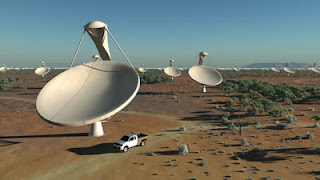 |
| Credit: Physics World |
The Square Kilometre Array (SKA) project will be hosted by South Africa and Australia, following a decision made by the SKA organization today.
If a photo is worth a thousand words, imagine the understanding that can be captured from 10 minutes at 30 frames per second. A scientific journal dedicated to video—a medium seldom seen in peer-reviewed publications—is finding out.
Increasingly, scientists include short video clips when they submit their manuscripts to a journal. But the Journal of Visualized Experiments—JoVE for short—is an online journal where video is the main medium rather than a supplement.
Each JoVE article consists of a short video segment that visually documents the required steps for performing an experiment. The video is supplemented by several paragraphs of peer-reviewed text. JoVE has developed a following in the life sciences, where being able to reproduce the results of an experiment in a timely fashion is a critical component to becoming a successful researcher.
They plan to offer an Applied Physics section July of 2012.
Technology Review: Science Journal Produces a Different Kind of Viral Video
Web site: JoVE.com
From one vet to all others...
 |
| Memorial Day Quotes |
 |
| Technology Review |
TECHNOLOGY REVIEW: In the race to build powerful quantum computers, many groups are competing to build logic gates that can process quantum information and still be connected together on a large scale.
The problem, of course, is that stray fields also interact with charged particles, causing the quantum information they carry to leak away. Stray fields litter the universe like the plague and this severely reduces the utility of these types of devices.
Primer: Controlled NOT gate (Wikipedia)
Physics arXiv: Controlled-NOT gate operating with single photons
Bought mine Tuesday...
Movie Site: RedTails2012
Amazon links:
Red Tails DVD
Red Tails Blu-Ray
Red Tails - Instant Video
Red Tails Reborn - Documentary
 |
| Crawling the Jefferies Tube - Captain Montgomery Scott |
The ashes of late actor James Doohan, who played chief engineer Montgomery Scott in the original "Star Trek" television series and a series of subsequent films, were on the SpaceX rocket that launched a private spacecraft into orbit this week.
Doohan's character was referenced in the "Beam me up, Scotty" catchphrase associated with "Star Trek."
We are connected now more than ever before—at every level—as physicists, scientists, members of society, and as humans. The advent of faster travel and instant communication connects people of all backgrounds across national, political, and ethnic borders.
In the modern connected world, physics is no longer an arcane science restricted to those with a PhD: physicists collaborate with biologists, engineers, and economists to help with education, climate science, and energy production. These are issues that affect everyone, and an understanding of physics enables involvement and brings new perspective for the betterment of all.
Physicists have a responsibility not just to discover, but also to share and to educate. Science plays a key role in a connected world, but it is not an automatic one. We must choose to forge the links between science and society, between the lab and the living room, and across the barriers that constantly threaten to divide the world. We must choose to bring physics to all.
Society of Physics Students: The SPS Observer
"Education, on the other hand, means emancipation. It means light and liberty. It means the uplifting of the soul of man into the glorious light of truth, the light only by which men can be free. To deny education to any people is one of the greatest crimes against human nature. It is to deny them the means of freedom and the rightful pursuit of happiness, and to defeat the very end of their being. They can neither honor themselves nor their Creator. Than this, no greater wrong can be inflicted; and, on the other hand, no greater benefit can be bestowed upon a long benighted people than giving to them, as we are here this day endeavoring to do, the means of useful education."
Frederick Douglass, Blessings of Liberty and Education, Teaching American History.
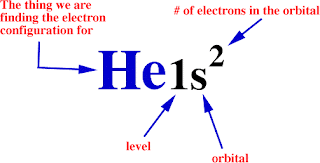 |
| Electron Configuration: Think Quest |
Scientific American:
Happy Birthday, Electron!
Nobel Prize:
Hendrik Antoon Lorentz
 |
| Photobucket |
ZapperZ's excellent rant: Stupid Politician Making Stupid Rants
AIP Press Release:
Theoretical Physicist Lisa Randall Wins 2012 Gemant Award
 |
| The ninth-century wall paintings predate existing Mayan astronomical records by hundreds of years |
Scientific American: Earliest Mayan Astronomical Calendar Unearthed in Guatemala Ruins
